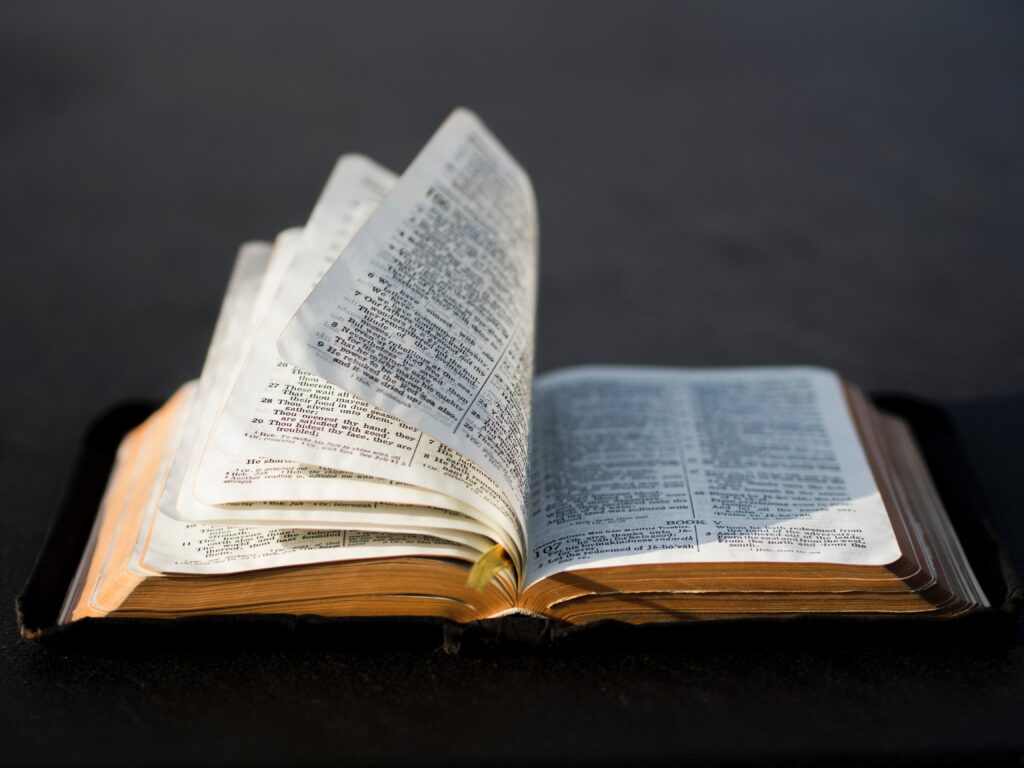
One evening after dinner when I was 7 years old, my mom hauled out the family Bible. “I think it’s time you kids read the book of Revelation,” she announced. (Our family often had after-dinner reading time of Scripture or religious books.) For the next three weeks, post-dinner dishes, my 10-year-old brother and I sat through a very literal reading of the Bible’s apocalyptic final book.
While I know it wasn’t my mom’s intention to scare me, this experience left me numb with fear. Who was this dragon and these four horsemen of doom? What was the mark of the beast? When would these events take place? The loving, gentle Jesus I knew from the Gospels seemed so harsh and inflexible here, hurling sinners into a fiery pit for all eternity. The end of time sounded like something I definitely wanted to miss.
Over the years since then, I’ve harbored a persistent unease about the book of Revelation. I’ve avoided reading it on my own. I fidget uncomfortably when it’s proclaimed during Mass. I guess I’ve figured if I don’t think about it, it can’t freak me out.
RELATED: How Can I Overcome My Fear of Death?
But recently, I decided to put on my big girl pants, as they say, and re-read Revelation’s 22 chapters—this time with the help of a scholarly commentary. I’d gotten a hold of an in-depth, briefcase-sized Bible commentary a couple years ago, which had shed light on numerous other passages in Scripture. Maybe, I thought, it could do the same for Revelation. Perhaps I could finally make some sense of this book, rather than wanting to cower under a blanket just thinking about it.
Now, as I started reading through the first few chapters of Revelation, I found they weren’t nearly so gloom-and-doom as I had remembered. In them, Christ admonishes seven churches in the ancient world to grow in holiness, preparing for the day of his coming. My commentary explained some of the symbolism in these chapters in a “fun facts” sort of way. (For example, the city of Smyrna was built to look like a crown from far away—giving double meaning to Jesus’ promise to give Christians there the true crown of life.) So far, so good.
Continuing on, however, I reached chapter 6, where the scary stuff really begins to barrel down the pike. Was I ready to encounter scrolls that release deadly horsemen upon the earth, famines, plagues, and a beast I pictured like something crawling out of a cave in “The Lord of the Rings” movies? I turned to my commentary in search of some comforting answers—and it definitely delivered.
Although these incidents may sound freaky as all get out, they’re apparently all par for the course in something called apocalyptic literature. This genre of writing was popular in the first century. It’s an intensified form of prophecy that, according to my commentary, draws on very strong imagery to make its point. The U.S. Conference of Catholic Bishops says that Revelation’s “symbolic descriptions are not to be taken as literal descriptions, nor is the symbolism meant to be pictured realistically.” (Good thing, ‘cuz I can’t say I find the image of Jesus as a lamb with seven horns and seven eyes very relatable.)
So, okay, maybe Jesus doesn’t really have horns, but what about other elements of the Revelation narrative, like the rule of a world-dominating antichrist or people disappearing straight off the planet in a sudden “rapture”? The Protestant tradition I grew up in sometimes advocates for a very literal interpretation of these events, and the “Left Behind” series of books and movies in the 1990s intensified popular belief that they could happen in the possibly-near future.
RELATED: When Did Catholics’ Understanding of Bible Stories Change?
If anything, according to both my commentary and Catholic teaching, much of Revelation was likely intended as a metaphor for current events its author, John, saw taking place in the Roman empire and Jerusalem. Many scholars believe that the evil “Babylon” that receives so much judgment in Revelation actually stood for Rome, whose excesses and violence would soon lead to its fall.
All this gives me great comfort, as does learning that in Catholic teaching, we can’t presume to have insider details about the end of time—and therefore, we don’t have to worry about them. We can trust that God is in control, and he is good. As I’ve embraced this outlook, I’ve begun to see Revelation as a book of joyful celebration. Those who have chosen Christ and lived their lives for him will sing the “Amen, Hallelujah!” along with the rest of the chorus of heaven. Now that I do want to be a part of.
Looking back on my journey with the book of Revelation, I see that, like so many other things in life, my fear of it stemmed from a lack of context. In our faith, there can be innumerable beliefs or concepts that can seem scary when we don’t really understand them—whether believing the Holy Ghost will literally haunt you or fretting about how we’ll spend eternity in heaven. The more we dig into the real meanings behind our beliefs, the more we see their logic—and the more we can let go of fear.
Originally published May 11, 2020.